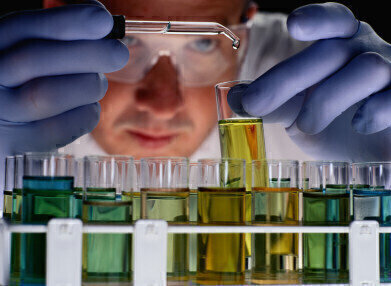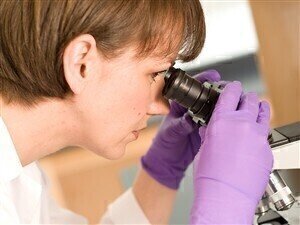GC, MDGC
How is Gas Chromatography Used in Forensics?
May 26 2014
Gas chromatography is the process whereby the various elements of a compound are separated into their distinct parts for individual analysis. This is most often achieved by observing how the elements react with a specific solvent and identifying them by their unique “retention time”. Retention time is the time which it takes for an element to release the solvent, and the process normally occurs when a liquid stationary element is transformed into a gaseous mobile element.
The process has a wide variety of uses, which are discussed in more detail here, but one of its most important and widely-recognised applicatons is in the field of forensic science. The various ways in which gas chromatography is used in forensics are outlined below.
Forensic Pathology
Since gas chromatography is useful in identifying the individual elements and molecules present in a compound, it has been applied in forensic pathology to determine which fluids and compounds are present inside a human body after death. This is vital in determining whether or the person was intoxicated either from alcohol or drug abuse at the time of death, or indeed whether there is any poison or other harmful substance present in their body. Of course, this is imperative knowledge to determining cause of death and possible motive and culprit in the case of foul play.
Crime Scene Testing
Gas chromatography can also be used to test samples found at a crime scene, whether these be blood samples or fibre samples from clothing or other materials. This allows scientists to pinpoint exactly what (and perhaps who) was present at the scene of the crime, and may even allow them to develop theories on where the suspect (or victim) had been before, depending on the variety of material found. Gas chromatography is incredibly useful here, since it can accurately identify substances with no error margin – which, in court, is understandably imperative.
Arson Investigation
The US Fire Administration believes that arson is the biggest cause of fires in the US, and the second biggest cause of death and injuries, and as such, arson investigation in forensic science is a very important discipline. Because fires are most often started using a cocktail of hundreds of different compounds and components, and these vary in terms of strength and concentration, it can be hard to determine what exactly started the fire. This problem is exacerbated by the fact that many compounds are dissolved during the fire, altering the makeup of the original incendiary.
However, a 2007 report by Yao Lu and Peter B. Harrington named “Forensic Application of Gas Chromatography-Differential Mobility Spectrometry with Two-Way Classification of Ignitable Liquids from Fire Debris” argues that gas chromatography can be a low-cost alternative of detecting flammable liquids, on-site. After testing a selection of flammable liquids, readily available to the public, they concluded that an incorporation of differential mobility spectrometry into gas chromatography (or, more simply, GC-DMS) yielded better, more detailed and more accurate results. Since then, such uses of gas chromatography have become well-recognised and widely accepted in the forensic studies fields.
Events
May 11 2025 Vienna, Austria
May 18 2025 Tempe. AZ, USA
May 21 2025 Birmingham, UK
Jun 01 2025 Baltimore, MD, USA
Jun 15 2025 Bruges, Belgium

















